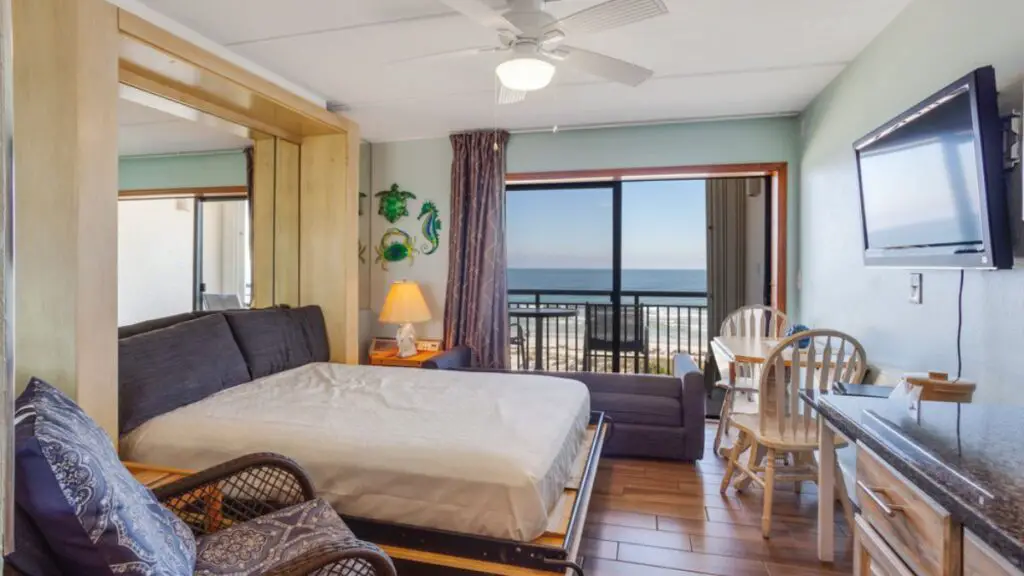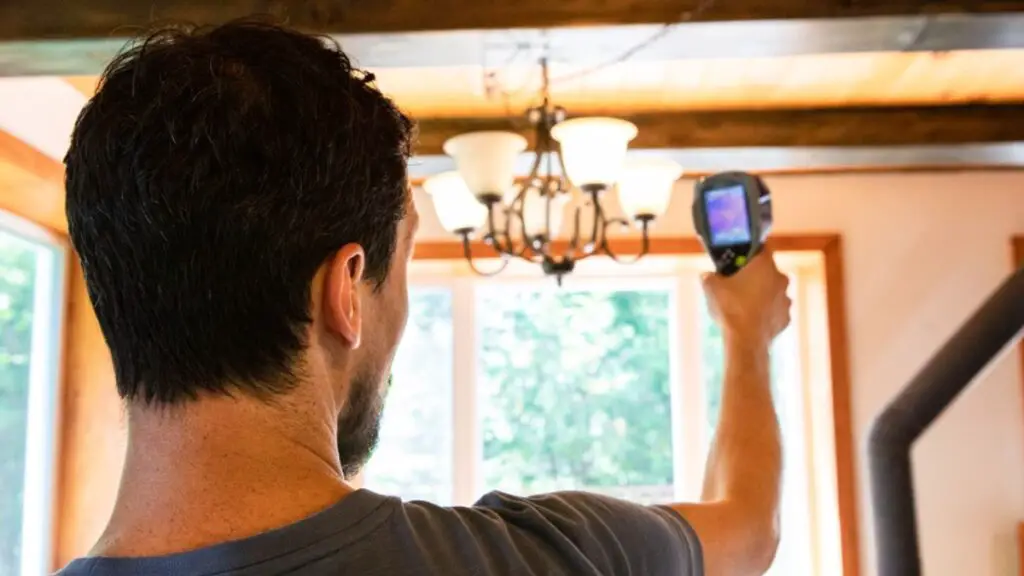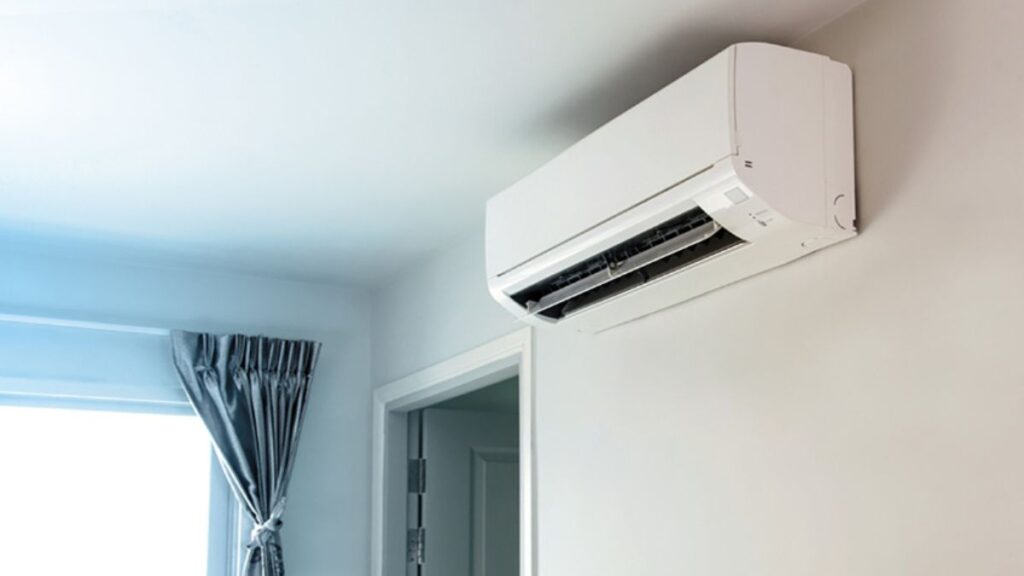When purchasing a new home or vacation property, a condo inspection checklist is essential to ensure you make a sound investment. We’ll walk you through inspecting a condominium, helping you identify potential issues, and ensuring the property is safe and secure.
A condo inspection is often referred to as a studs-in inspection. The inspection will focus on the internal systems and structure within the exterior walls, including doors, windows, and attached balconies or decks.
The inspection does not cover the entire building. It focuses on various aspects of the unit, including the electrical system, plumbing, heating and cooling systems, appliances, windows, doors, and the overall condition of the interior spaces, such as the kitchen, bathroom, and living areas.
| Key Takeaways |
|---|
| A condo inspection is an essential step in the buying process to ensure the overall condition of the unit and identify any potential issues or safety hazards. |
| It provides peace of mind for buyers and sellers, revealing hidden problems that may not be apparent during initial viewings. |
| A thorough inspection can help negotiate repairs or a lower purchase price based on significant issues found during the inspection. |
| It provides peace of mind for buyers and sellers, revealing hidden problems that may not be apparent during initial viewings. |
| During the exterior inspection, it’s important to check for cracks, examine balconies/patios/decks for safety hazards, and ensure proper sealing of windows and doors. |
| Safety inspection ensures smoke detectors, carbon monoxide detectors (if applicable), and fire extinguishers are present and functioning properly. |
| The structural inspection involves examining walls, ceilings, and floors for cracks or water damage and inspecting the foundation for settling or shifting. |
| HVAC inspection includes testing heating and cooling systems for proper function and checking air filters for replacement. |
| Safety inspection ensures smoke detectors, carbon monoxide detectors (if applicable), and fire extinguishers are present and functioning properly. |
| Regular maintenance and timely repairs based on inspection findings can prevent costly repairs and provide a safe living environment in your condo. |
The Importance of a Condo Inspection Checklist
Buying a condominium is an exciting time, but it can also be overwhelming. One of the most important steps in the buying process is conducting a condo inspection, including a technical audit, before finalizing the sale.
A licensed home inspector performing a condo inspection inspects the overall condition of the unit but does not include common areas in a condominium complex.
The building owner maintains common areas, structural components, exterior surfaces, roofing, and maintenance issues, and the Condo Association covers repairs.

Why a Condo Inspection Checklist is Important?
One of the biggest advantages of having a condo inspection is that it provides peace of mind for prospective buyers and sellers. A thorough inspection can reveal any hidden problems or damage that may not have been apparent during initial viewings. Without an inspection, you could end up with unexpected and expensive repairs down the line.
A condo inspection can also give you leverage during negotiations. If significant issues are discovered during the inspection, you can either negotiate for repairs or ask for a lower purchase price to compensate for any work that needs to be done.
What is the typical expense for a condo inspection in your state? Explore our complimentary Home Inspection Cost Calculator and FREE resource How Much a Home Inspection Costs.
What Will The Checklist Cover?
The checklist used by inspectors will cover several areas within your potential future home:
- Exterior Inspection: will examine things like cracks, balconies/patios/decks, windows, and doors, which ensures safety & proper sealing
- Interior Inspection: testing electrical outlets and switches, plumbing fixtures; examining appliances to ensure they are in working order
- Structural Inspection: inspecting walls, ceilings, and floors within the unit; examining for signs of settling or shifting
- HVAC Inspection: testing heating/cooling systems to ensure proper function; checking air filters if replacement needed
- Safety Inspection: ensuring smoke detectors, carbon monoxide detectors, and fire extinguishers are present and functioning properly
In the following sections, we will detail what each area covers in a condo inspection checklist.
Exterior Inspection
Your condo’s exterior is always exposed to the elements and is subject to wear and tear. You must thoroughly inspect the building’s exterior for any signs of damage or cracks, as these could indicate larger structural issues.
While structural costs are the association’s responsibility, inspecting the structural areas accessible from the unit can alert potential buyers to problems with the building.
Checking for Cracks or Damage in the Building’s Exterior
First, carefully examine the walls around your condo’s entire perimeter. Look for any cracks, holes, or other damage.
Pay close attention to areas where two walls meet or where there are any openings, such as windows or doors. These spots are most vulnerable to water intrusion, which can cause significant damage over time if not addressed.
If you do find any cracks or other damage, make sure to take note of their size and location. This information will be helpful if you need to bring in a professional inspector or contractor later.
Examining Balconies, Patios, and Decks for Safety Hazards
If your condo has attached outdoor spaces such as balconies or patios, it’s important to inspect them carefully for safety hazards. Look for loose railings, cracked concrete, or rotted wood on decks. These issues can pose a serious safety risk if left unchecked.
In addition to visual inspections, don’t forget about proper drainage in these areas. Ensure water isn’t pooling anywhere on these surfaces, as this can lead to further structural problems.
Inspecting Windows and Doors for Proper Operation
Make sure all windows and doors are properly sealed against air leaks. Check that weatherstripping is properly functioning around all windows and doors.
To test whether there are air leaks around your windows or doors, light a candle on a windy day and hold it up to the edges of your windows or doors.
If the flame flickers, it’s a sign that air is coming in around the frame. By being thorough in your exterior inspection, you can catch any potential issues early on and avoid costly repairs down the road.

Interior Inspection
The interior is the bulk of the makeup of condominium inspections. A professional home inspection is an important part of the real estate purchasing process.
Testing Electrical Outlets and Switches: Are They Safe?
When it comes to electrical work, safety should be your top priority. Testing electrical outlets and switches is essential to any condo inspection checklist. You don’t want to move into a new place only to discover that your outlets aren’t grounded or that your switches are faulty and could cause a fire.
We test each outlet and switch in every condo room during an interior inspection. This includes checking for proper grounding, polarity, and voltage.
We also look for any signs of wear or damage on the outlet cover plates and any exposed wires. If we find any issues, we note them in our report to address them as soon as possible.
Checking Plumbing Fixtures for Leaks or Damage: What to Look For
Next up on our interior inspection checklist is checking plumbing fixtures such as sinks, toilets, and showers for leaks or damage. The last thing you want is to move into a new place only to find out you have water pressure issues, a leaky faucet, or a clogged drain.
During our inspection, we inspect each fixture thoroughly, looking for signs of wear and tear, such as cracks in the porcelain or rust on the metal parts.
We also run water through each fixture to check for proper flow rates and observe how quickly the water drains away. Any leaks found during this process will be noted down in our report so that they can be fixed before you move in.
Examining Appliances: Will They Work When You Need Them To?
We examine all appliances in the condo, including refrigerators, stoves/ovens, dishwashers (if present), microwaves (if present), washing machines (if present), and dryers (if present). All appliances are tested to be sure they are in good working order, and we check for any signs of wear or damage.
If there are any issues, we make sure to note them down, along with the model number of the appliance, in our inspection report so that they can be fixed or replaced if necessary. It’s essential to have an expert examine the appliances because replacing or repairing them can be costly.
After you’ve moved in, you don’t want to discover that your dishwasher doesn’t work or your dryer needs a major repair job. By examining these appliances thoroughly beforehand, you’ll be able to sleep soundly, knowing everything is in good working order.
Structural Inspection
Limited areas of the building structure should be inspected for current or previous water damage or signs of settlement problems indicating the building has structural concerns.
Inspecting Walls, Ceilings, and Floors for Cracks or Water Damage
The structural integrity of a condo is crucial for a safe and secure living environment. During the inspection process, each room’s walls, ceilings, and floors should be examined to ensure there are no cracks or water damage that could indicate a larger issue. Small cracks are common over time due to settling or shifting structures; however, they can lead to more significant problems if not addressed promptly.
Water damage can indicate leaks in the building’s plumbing system or even roof damage. Identifying these issues early on can save time and money in repairs down the road.
During an inspection, it’s essential to keep an eye out for any discoloration or stains on walls and ceilings, as they may be signs of water damage. The inspector will also check for any bowing or sagging in walls and floors, which can indicate deteriorating structural support.
Examining the Foundation for any Signs of Settling or Shifting
A building’s foundation provides stability and support throughout its lifespan. Cracks in the foundation can indicate settling or shifting that could affect other parts of the building.
An inspector will look at the foundation closely during an inspection to ensure it is structurally sound. A sign that an inspector looks out for indicating potential foundation issues is uneven flooring throughout different rooms in a condo unit which may suggest shifting towards one side of your home with weaker support than others.
Another risk is if windows start shifting from horizontal alignment due to improper foundational support leading to visual cues like cracking within frames visible from within affected rooms.

HVAC Inspection
Each condo has an independently controlled heating and cooling system. It is important to check the air ducts and vents to ensure they work properly. Be sure to look for any obstructions or blockages affecting airflow.
Testing Heating and Cooling Systems to Ensure They are Functioning Properly
Your condo’s heating and cooling systems are essential for keeping you comfortable throughout the year. To ensure that they are functioning properly, a thorough inspection is necessary. An HVAC inspection typically involves testing the temperature control system, checking for leaks or damage in the ductwork, and examining the condenser unit.
The inspector will also measure airflow to ensure that it’s adequate. During an HVAC inspection, paying attention to any unusual noises or smells coming from the system is important.
These can be signs of an underlying issue that needs to be addressed. The inspector will also check for any loose connections or faulty electrical systems that could pose a safety hazard.
Checking Air Filters to See if They Need to be Replaced
Air filters are crucial in keeping your condo’s HVAC system running smoothly. They help remove dust, allergens, and other contaminants from the air before it circulates through your home.
Over time, however, air filters can become clogged with debris and lose their effectiveness. During a condo inspection checklist, one important task is checking the air filters in your heating and cooling system.
The inspector will examine the filters for signs of wear or tear and determine whether they need to be replaced. Replacing air filters regularly not only helps keep your HVAC system running smoothly but also has health benefits for you as well!
Dirty air filters can cause respiratory problems such as allergies or asthma because they allow dust particles into your home’s air supply, aggravating those issues even further. Paying close attention to your condo’s HVAC system during an inspection is critical because it ensures proper heating and cooling systems functioning, which helps keep you comfortable all year long!
Safety Inspection
Inspecting safety issues can cover a multitude of items. These are some of the most common.
Ensuring Smoke Detectors are Present and Functioning Properly
Smoke detectors are a crucial part of any safety inspection in your condo building. They provide an early warning system in case of a fire and can save lives.
Ensure at least one smoke detector on each unit level when conducting a condo inspection for efficiency units. Multi-room units should have smoke detectors inside and outside all bedrooms. Additionally, ensure the detectors have not passed their expiration date and have fresh batteries installed.
Once you’ve confirmed that the smoke detectors are present, it’s time to test them. Depending on the model, there are different ways to test a smoke detector.
For some models, simply pressing a test button will do the trick, while for others, you may need to use canned smoke or actual flame. It’s important to follow the manufacturer’s instructions when testing your detectors.
Checking Carbon Monoxide Detectors (if applicable)
Carbon monoxide (CO) is an odorless gas produced by fuel-burning appliances such as furnaces, water heaters, and stoves. It can be deadly if not detected early on.
Carbon monoxide detectors are designed to alert you when dangerous levels of CO build up in your condo unit. Check whether your condo has carbon monoxide detectors installed, as they may be required by law, depending on where you live.
If so, ensure they are located in appropriate areas within your unit, such as near bedrooms or living areas where people spend most of their time. Test them regularly to make sure they’re working properly.
Examining Fire Extinguishers to Ensure They’re Up-to-Date (if applicable)
Building occupants can use fire extinguishers during small fires before firefighters arrive on the scene; therefore, they must be maintained properly. During an inspection, ensure that there is at least one fire extinguisher per floor and that it’s easily accessible for all occupants.
The extinguisher should be mounted on a wall or kept in a cabinet with clear signage identifying its location. It’s also important to check the fire extinguisher’s expiration date to ensure it’s still valid.
Fire extinguishers typically have a lifespan of around 10 years; after that, they must be replaced. Additionally, ensure that the pressure gauge on the fire extinguisher is within normal range, indicating that it’s fully charged and ready for use.
Condo Inspection Checklist FAQs
How long does a typical condo inspection take?
The duration of a condo inspection can vary depending on factors such as the size of the unit, its condition, and the complexity of the inspection. On average, a condo inspection may take 1 to 3 hours. However, larger or more complex condos may require more time.
What should I inspect in a new condo?
When inspecting a new condo, you should focus on the condition of the interior spaces, such as the kitchen, bathroom, living areas, electrical system, plumbing, heating and cooling systems, and appliances. Also, check for any signs of damage or wear and tear on the floors, walls, windows, and doors.
How often should condos be inspected?
The frequency of condo building inspections can vary based on local regulations and the specific policies of the condo association. It’s recommended that rentals be inspected after guest checkout for damage. Major building systems like the plumbing, HVAC, and electrical systems be inspected at least once every few years.
Conclusion
After reading through the various sections of this article, it should be crystal clear why a thorough condo inspection checklist is so important. Too many potential hazards and areas of concern exist to leave things to chance. By being proactive and completing a thorough inspection, you can gain peace of mind knowing that your investment is protected and that you and your loved ones will be safe.
One thing to remember is that condo associations may have their inspection guidelines or requirements. However, if possible, it’s always a good idea to go above and beyond those minimum standards.
This will help ensure that you aren’t missing anything important and that you catch any issues before they become major problems. If you’re buying or selling a condo or just looking for ways to improve your living space, don’t overlook the importance of a comprehensive condo inspection checklist.
It may take some time and effort upfront, but the benefits outweigh any inconvenience. Remember: safety first!







